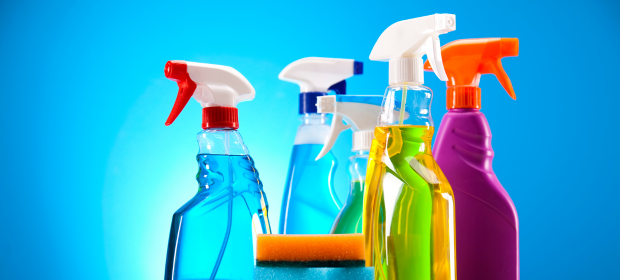A recent study on the effect of chemical cleaning sprays on our lungs has highlighted an unusual bias to lung damage in women. The research concludes that many cleaning sprays aren’t necessary and water and a microfibre cloth are adequate for most purposes.Read more: Use Fewer Chemicals by Utilising Additives Properly
But the report fails to highlight a third option, to include smart ingredients in your household products, fixtures and furnishings. We’ll talk more about that later in this article.
The Report
Published in the American Thoracic Society’s American Journal of Respiratory and Critical Care Medicine, a research group at the University of Bergen in Norway collected and analysed data from around 6,200 participants for over 20 years.
The researchers were focussed on long term impact of chemical cleaning sprays, as the short term effects – particularly on those with asthma – are well documented. They discovered that the “forced expiratory volume” and “forced vital capacity” of the lungs of women who use cleaning sprays frequently declined significantly in comparison to women who do not use cleaning sprays often. The same observation was not seen in the male participants of the study.
While the report does point out some socio economic limitations of this data set, the report still highlights the potential over-use of cleaning chemicals that likely have an effect on our bodies.
Should We Use Fewer Cleaning Chemicals?
This is a question without a simple answer. Depending on your circumstances, stronger cleaning agents may be necessary in some cases. But let’s not tarnish all ‘chemical ingredients’ with the same brush.
There are many naturally derived ingredients already on the market that do a great job at cleaning and are less harmful to humans and the environment. Just because an ingredient is labelled as a ‘chemical’ doesn’t mean it is a toxic ingredient cooked up by a mad scientist in a lab. And with cleaning becoming more ‘trendy’ with millenials and gen z the household care industry is becoming more focussed on naturally derived ingredients that perform well.
So there is a certain degree of education and availability that come into the answer to this question.
Alternatives To Cleaning Chemicals
Curiously, the report highlights that a microfibre cloth and water are adequate for more cleaning purposes. From our perspective, this is not adequate for kitchen or bathroom cleaning at home, and probably not adequate for most industrial purposes either.
However there is another way. Additive chemicals, added during the manufacturing process, can help products perform better.
Our supplier, Sanitized, offer a BPR-compliant additive which can be used in the manufacture of almost anything. Commonly it’s included in medical products like latex gloves, in bathroom and kitchen fixtures and fittings, as well as everyday items like clothing. The ingredient allows the end product to impart an antibacterial and antiviral property, meaning that less harsh cleaning products can be effective, since the most dangerous microorganisms are not present on these surfaces to begin with.
Other additives that can help cut down on the need for bleach are optical brighteners and UV absorbers that help products look newer for longer.
It’s possible to manufacture your products to have these ‘smart properties’, which in turn becomes a USP for you to market. And as the trend towards products that offer more continues, we expect to see new items available that solve these types of problems at an early stage.
If you’re interested in discussing how you can manufacture your products to be ‘smart products’, speak to our team. We can offer you a free consultation with our technical experts.







